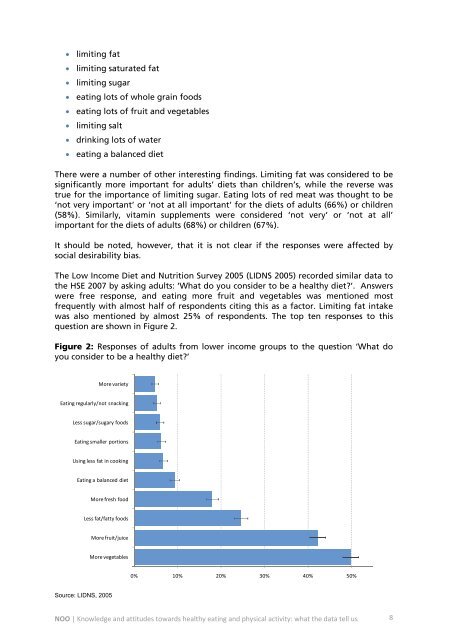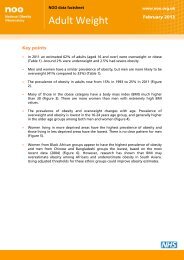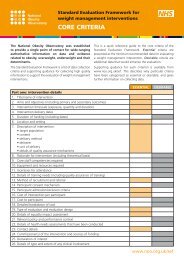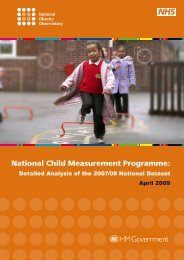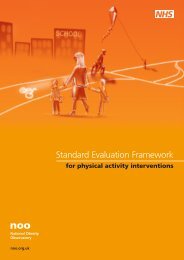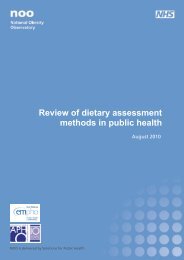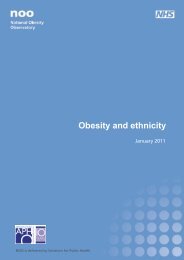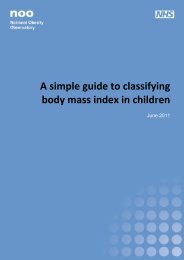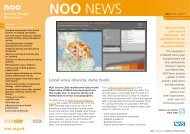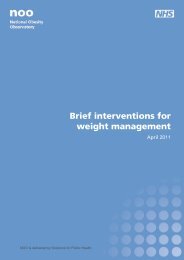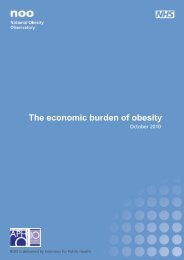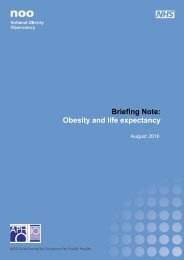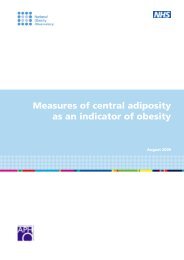Knowledge and attitudes towards healthy eating and physical activity:
Knowledge and attitudes towards healthy eating and physical activity:
Knowledge and attitudes towards healthy eating and physical activity:
Create successful ePaper yourself
Turn your PDF publications into a flip-book with our unique Google optimized e-Paper software.
• limiting fat<br />
• limiting saturated fat<br />
• limiting sugar<br />
• <strong>eating</strong> lots of whole grain foods<br />
• <strong>eating</strong> lots of fruit <strong>and</strong> vegetables<br />
• limiting salt<br />
• drinking lots of water<br />
• <strong>eating</strong> a balanced diet<br />
There were a number of other interesting findings. Limiting fat was considered to be<br />
significantly more important for adults’ diets than children’s, while the reverse was<br />
true for the importance of limiting sugar. Eating lots of red meat was thought to be<br />
‘not very important’ or ‘not at all important’ for the diets of adults (66%) or children<br />
(58%). Similarly, vitamin supplements were considered ‘not very’ or ‘not at all’<br />
important for the diets of adults (68%) or children (67%).<br />
It should be noted, however, that it is not clear if the responses were affected by<br />
social desirability bias.<br />
The Low Income Diet <strong>and</strong> Nutrition Survey 2005 (LIDNS 2005) recorded similar data to<br />
the HSE 2007 by asking adults: ‘What do you consider to be a <strong>healthy</strong> diet’. Answers<br />
were free response, <strong>and</strong> <strong>eating</strong> more fruit <strong>and</strong> vegetables was mentioned most<br />
frequently with almost half of respondents citing this as a factor. Limiting fat intake<br />
was also mentioned by almost 25% of respondents. The top ten responses to this<br />
question are shown in Figure 2.<br />
Figure 2: Responses of adults from lower income groups to the question ‘What do<br />
you consider to be a <strong>healthy</strong> diet’<br />
More variety<br />
Eating regularly/not snacking<br />
Less sugar/sugary foods<br />
Eating smaller portions<br />
Using less fat in cooking<br />
Eating a balanced diet<br />
More fresh food<br />
Less fat/fatty foods<br />
More fruit/juice<br />
More vegetables<br />
0% 10% 20% 30% 40% 50%<br />
Source: LIDNS, 2005<br />
NOO | <strong>Knowledge</strong> <strong>and</strong> <strong>attitudes</strong> <strong>towards</strong> <strong>healthy</strong> <strong>eating</strong> <strong>and</strong> <strong>physical</strong> <strong>activity</strong>: what the data tell us 8


